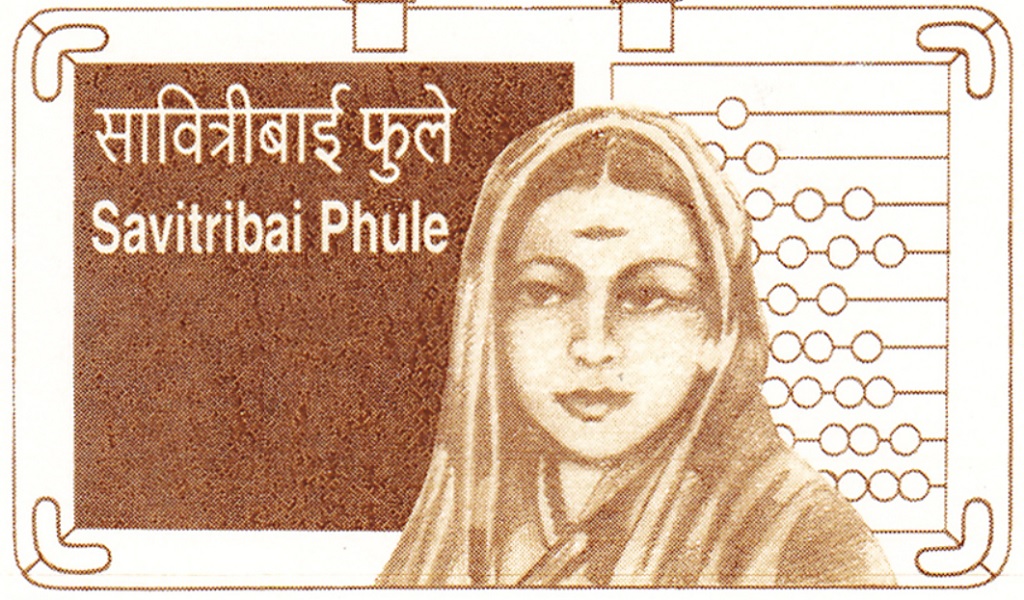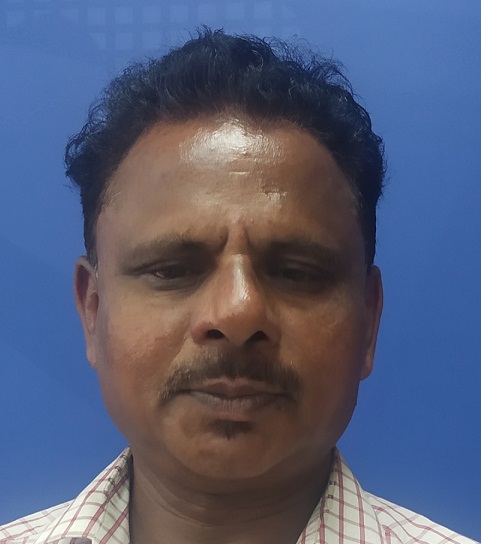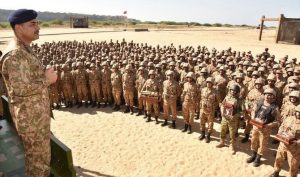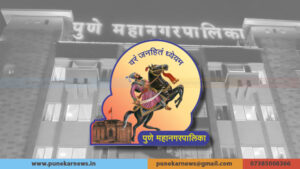Cynthia Farrar, social reformer and teacher of Savitribai Phule

Camil Parkhe
Pune, 7th March 2023: Cynthia Farrar. Does this name ring bells in your mind? It is unlikely. For although the social and educational history of Maharashtra and of whole India remains incomplete without mentioning her name, Cynthia Farrar, nevertheless, is an unfamiliar name. Cynthia Farrar was the first unmarried Christian woman missionary to arrive from America to India early 19th century. She was a pioneer social worker who devoted her life for women’s education, first few years in Mumbai, for a brief period in Mahabaleshwar and later several years in Ahmednagar where she breathed her last.
But Cynthia Farrar’s important identity is being the teacher of veteran social reformer Savitribai Phule, wife of Mahatma Jotiba Phule. Farrar is also a pioneer of women’s education in India and she is credited with launching many girls’ schools and girls’ boardings in Mumbai and Ahmednagar. Fatima Shaikh who taught at the girls’ school started by Mahatma Phule and Savitribai in Pune was, along with Savitribai, also trained by Farrar in Ahmednagar.
However Cynthia Farrar is not the first person to work for female education in the country. Prior to her arrival in India, many Christian missionaries had launched girls’ schools in India.
On February 12, 1813, the first missionaries of the American Marathi Mission Gordon Hall, Samuel Nott and Mrs. Nott, arrived at Mumbai port. The policy of the East India Company did not allow Christian missionaries to arrive in India, but later, in July 1813, the British Parliament permitted the missionaries to work in India.
The very first schools for girls were opened by The American Marathi Mission in Mumbai, Konkan and nearby areas.
According to the American Marathi Mission documents, the first school for girls was established by this Mission in Mumbai in March 1824.
Significantly, it is said that It was taught by a native woman named Gangabai. This was the first School of the kind in western part of India. As soon as it was opened, two English ladies in Mumbai offered to pay all the expenses of the unique school. But unfortunately in the month of May following, there was a serious and fatal outbreak of cholera, and among the dying thousands in the city, Gangabai, the schoolmistress, was one. As no one could be found to take her place, the first school for the girls was broken up.
The American Marathi Mission papers say “We regret that no further mention is made of this Gangabai, the first native woman employed in Bombay to teach a Christian school. How did she herself learn to read ? And in the face of the odium attaching to such an occupation, where did she get the courage to enter upon it ? How mysterious the stroke which called her away when she was the only one to be found who could and would teach this school !’’
In one of the reports entitled “What the American Mission has done for the women in India, ’’ Mrs. L. S. Gates has written: So far as I can learn, the first school founded for girls in Western India was in 1824. A girl by the name of Ganga had been taught by missionary ladies, and she was given the task of teaching in this first school and some English ladies and gentlemen offered to defray expenses. Cholera soon came, and the faithful Ganga died of the dread disease.
In his address on behalf of the Indian Christian community on the occasion of the Mission’s century on 7 November 1913 in Mumbai, Bapurao N. Athavle (B.A., LL.B., J.P.) says: “And as I am on this point I ask you to join with me in paying a warm tribute of praise to the American Marathi Mission for being the founders of female education. It was just 11 years after the arrival of Gordon Hall and Samuel Nott, in 1813, that the first school for girls was opened at Byculla under the care of a lady teacher named Gangabai, and the little stream which was dug out of the rock of superstition has continued to flow with increasing force and volume throughout the length and breadth of the country to such an extent that we now see women agitating for colleges and universities of their own.’’
Among other Christian missionaries who laid the foundation of female education in India included Mary Ann Cooke (later Mary Ann Wilson) who started girls schools in Kolkata, Scottish missionaries John Wilson and his wife Margaret who established girls schools in Mumbai, Rev. Allen Graves and his wife Mary who had girl’s schools in Mahableshwar and Satara.
The pioneer missionary Gordon Hall died at the age 41 at Dodi Dapur village near Nashik on March 20, 1826 . This was a great blow to the American Marathi Mission. However soon a new team of American missionaries arrived in Mumbai on December 29, 1827. They were David 0. Allen, his wife Azubah Allen, Cyrus Stone and his wife Atossa Stone. Another person accompanying them was Miss Cynthia Farrar, Cyrus Stone’s cousin. Farrar worked for several years in the girls’ schools in Bombay and in Ahmednagar.
“The first boarding schools were in the missionary families, as the missionaries were able to take children to support and instruct. In 1836, however, a boarding school for girls was begun by Miss Farrar, in the Mission house near the Chapel, with 13 girls, five of them being negroes, rescued from a slave ship. This appears to have been continued, during Miss Farrar’s absence in America the following year, by Mrs. Allen; and soon after the arrival of the Humes, in 1839.’’
According to the American Marathi Mission documents, “Miss Cynthia Farrar joined the mission, and engaged in earnest efforts to improve the schools for Hindu girls in Bombay. She labored incessantly for this object, and, considering the strong prejudices of the natives at that time against female education, she achieved a wonderful success.’’
In the report of the mission for 1829, it is stated that the number of these schools had been increased, so that there were over 400 girls in attendance, of whom 122 were good readers, and could write a fair, legible hand.
In 1832, a public examination of the girls was held, of which the following account was given in a native paper of that time. It first appeared in Gujarati in the Bombay Hurkaru and Wartaman, and the English translation appeared in the Darpaji: “Last Thursday, November 29th, there was an examination at the American Mission Chapel in Bhendi Bazar of the schools for Hindu girls. Many European ladies and gentlemen were present, and we also attended. At II o’clock the children were examined in Marathi, which they read fluently. They answered questions promptly, and sang a Christian hymn in a pleasant manner, seldom excelled even by English children. After the examination in reading was concluded, the girls’ needlework, embroidery, and the stockings they had knitted, were exhibited ; and these appeared equal to work of the same description performed in England. There were children’s woolen stockings finer than those made in England. The ladies present praised the girls, and the lady who had taught them. The children having learned so much during the short period of six months, [the needlework, knitting, etc] every one present felt convinced that they would soon learn to make many other useful things. We forgot to mention above that the handwriting of the girls was so neat as almost to pass for lithography.’’
“These schools attracted the attention and received the cordial and efficient support of the highest and best members of the European community. The Governor, the Chief Justice, Members of Council, the Archdeacon (afterwards Bishop,) of the Diocese, and ladies of rank, supported them by their presence at the examinations, and by liberal contributions. In one year Rs. 1,880, and in another Rs. 2,000 were received for the support of these schools. Among the donations was one of Rs. 500 from His Excellency Mountstuart Elphinstone, then Governor of Bombay, and another of Rs. 300 from his successor, Sir John Malcolm.”
“These schools in Bombay were continued in efficient operation for several years. Changed circumstances made it necessary afterwards to reduce the number of them. Miss Farrar’s health failed, and a visit to America became imperative for her. Other laborers coming to the mission found themselves drawn into other spheres of effort. When Miss Farrar returned to India, she went to Ahmednagar, and commenced the same line of effort there.
In one of the reports it is stated: “In Bombay, there were schools for girls, at times as many as 12 in number, with from 200 to 300 pupils, located in various parts of the city, but gradually they became more concentrated and the number was reduced by combining several schools at the Bhendi Bazar center, opposite the chapel, and at the Byculla Mission house. Miss Cynthia Farrar was for many years the superintendent of these schools, until ill health required her to go to America, after which her labors were continued at Mahabaleshvar and at Ahmednagar until her death in 1862.’’
In 1845 and 1846, it is said in the report, ” Miss Farrar has had four girls’ schools under her superintendence, containing over 100 pupils.” She kept up several of these schools until 1862, the year of her death.’’
The document further says:
“Miss Farrar’s careful superintendence of her schools, and her persistent personal efforts, often secured a measure of success where others would have failed. The difficulties she encountered were such as would have deterred most ladies, at the outset, from attempting this kind of labor. Owing to the strong prejudice then existing against the education of girls, there was on the part of parents an utter want of appreciation of the value of the instruction received, and of the importance of regularity in attendance. Hence for any trivial reason the girls might be suddenly withdrawn, and kept at home, or sent to some distant village for a month or a six months’ visit at home, or sent to some distant village for a month or a six months’ visit.
The custom of marrying the girls in childhood was of itself nearly fatal to any plans for their proper education. The training under the tongue and hand of the Sasu (mother-in-law,) was thought more important than the teaching in school ; and before the girl was old enough to receive the full benefit of any course of study, she was often taken out of school, and sent to the home of her husband, which means to the home of his parents. It was chiefly by gaining the love of her pupils, and making it pleasant for them to attend her school, that Miss Farrar could keep them long enough to learn to read, and acquire a little knowledge of that truth which has done so much for women in Christian lands.
Yet often did she lament that her lifework bore so little fruit, because the girls were withdrawn from her schools, and remanded to all the evil influences of an idolatrous home before there was time for the truth to gain a firm lodgment in their hearts.
Others besides Miss Farrar have felt the above difficulty with regard to this kind of missionary labor. Most of the ladies of the mission at the different stations have kept up one or more such day-schools for Hindu girls. In some places the old prejudice has so far yielded as to allow of the employment of Christian teachers.”
In one of the reports, Mrs. L. S. Gates has described Farrar’s contribution in following words: “In 1827 Miss Cynthia Farrar came out to India to help the women. She started a number of schools for girls in Bombay, which were aided by kind friends among the English, and Indian gentlemen of high rank were induced to help as they saw the advance girls were making. Miss Farrar superintended some schools whose support was given by an English society. She loved her work, and, though she was offered chances for advancing in worldly goods, she put all behind her and, with consecrated zeal, went forward with her humble work. She was always anxious to be doing something for her Saviour. She said of herself: “ I brought my labors, feeble and almost worthless—[as she considered them]—and laid them at my Saviour’s feet every night, begging His acceptance of the offering.”
This was the spirit in which she labored. She was full of enthusiasm for her work. Her scholars always remembered her with great affection and gratitude.
In 1852 Miss Farrar received calls from native gentlemen from the vicinity of Ahmednagar and from that city, asking her to come and show them how to teach their families, the women. Two schools in Ahmednagar were supported by Brahmins and continued till the Brahmin teacher in one of the schools became converted, and they were then closed by the children being withdrawn.
Miss Farrar had the esteem of the native community to a high degree. They looked up to her as almost divine. Her purity, devotion, holiness of life, benevolence of heart and active labors for women were altogether new to those who had looked upon woman as an inferior being. When she died, women came by hundreds to the funeral, that they might, for the last time, look upon the loved features.’’
American Marathi Mission has described the interaction Mahatma Jotiba Phule had with Cynthia Farrar and the guidance she gave him in establishing girls’ school in Pune without mentioning his name.
‘‘Miss Farrar was also glad to be able to afford some advice and assistance in regard to the establishment and management of female schools to a young gentleman from Poona, who was deeply interested in the education of females. After returning from Ahmednuggur to Poona he commenced schools for the education of Hindoo girls, which were supported by natives and some benevolent English gentlemen, and continued to prosper for some years.’’
Mahatma Jotiba Phule himself has acknowledged that he was inspired by the girls’ school conducted by Miss Cynthia Farrar at Ahmednagar. Following is the account given by veteran biographer Dhananjay Keer in his biography ‘Mahatma Jotirao Phooley: Father of the Indian Social Revolution’: “In 1848 Jotiba’s bosom friend Sadashiv Ballal Govande who was in service with the Imam Commission was transferred to judge’s office in Ahmednagar, which was a well-known centre of missionary schools. The strong man and the waterfall says the proverb, channel their own path. When Jotiba was about to start a girls’ school he went to pay a visit to his friend Sadashiv Govande in Ahmednagar.
Jotiba himself tells us what he did on the eve of starting the first girl’s school. ‘’ The low castes, Mahars, Mangs, Chambhars, etc, ‘’ he narrates, ‘’composing a great part of my countrymen, being sunk deep in ignorance and misery, the Lord was pleased to excite in me a desire to better their conditions through means of education.‘’ ‘’ Female schools,’’ he observes, “first of all attracted my notice, as upon mature consideration, they were found to be even more necessary than male ones, the root of education lying in the proper turn mothers give to the disposition of children between their second and third years. In this state of mind, I visited, while at Ahmednagar, in company with a particular friend, the female schools belonging to the American Mission conducted by Miss Farrar and was highly pleased with the manner in which the girls in those schools were educated.
Miss Farrar expressed to Jotiba and Govande great sorrow at the neglect of female education in this country. They were impressed by the foreigners’ perseverance in improving their country and felt for their countrymen’s neglect of it. ‘’ Immediately on my return to Poona,’’ Jotiba continues, ‘’ I opened a Low Caste Female School, allowing, however such boys as wished to do so to attend also. In this I commenced to teach reading, arithmetic and the elements of grammar.’’
American Marathi Mission has described the life and works of Cynthia Farrar in following words: “We have not the information necessary to enable us to give an account of her early life. We only know that in 1827 she came to India in company with her cousin, Rev. Cyrus Stone, to engage in Missionary labors. Landing in Bombay in December of that year, she immediately commenced her efforts for the education of Hindoo girls in that city. She established a number of schools containing girls of even the highest castes, and she continued to superintend and instruct them for several years, being encouraged and aided , in her interesting work by ladies and gentlemen of the highest rank in Bombay.
Archdeacon (afterwards Bishop) Carr, James Farish, Esq. , who became Governor of Bombay on the death of Sir Robert Grant, and many others whose names need not be mentioned here, afforded her important aid, and cheered her by their kind words and by their benevolent deeds.
She for some time superintended a number of schools supported by the funds of an English Society, which were disbursed by the Venerable Archdeacon Carr. She loved her work, and would not give it up for any earthly good.
Ill health , brought on by her severe labors, compelled her to return to America in 1837 , but in 1839 she again returned to India in the family of Rev. Mr. Burgess, and immediately after her arrival in the country she removed with Mr. and Mrs. Burgess to Ahmednuggur, where she continued to reside, with the exception of a few months, laboring faithfully, till her death.
Many of her scholars remembered her with great affection after they had gone out from her schools and had become wives and mothers, and she frequently received letters from them evincing their affection for her and their gratitude for the instructions they had received .
The Mission’s annual report in 1861 says: “Miss Farrar continued to attend to the schools under her charge, the girls’ school in the Lascar Lines, and the small school for boys in connection with the school for catechists, until her increasing illness compelled her to lay aside her work, never to be again resumed. She had finished her efforts for the females of this country and all her labor for Christ’s sake, and was gradually and gently passing down into the dark valley, her outward man decaying while the inward man was being renewed day by day. The last day will doubtless reveal many precious fruits of her labors. ’’
American Marathi Mission’s report for 1862 carries the sad news of death of Miss Cynthia Farrar. It says: “While we thus speak the language of encouragement and of thanksgiving, we have also occasion for mourning. God has come very nigh to us and removed from our midst one who had long labored in connection with this Mission . Miss Farrar, whose frail body had been gradually sinking under the power of disease during the latter part of 1861 , grew weaker and weaker daily as the new year commenced, and on the 25th of January, after 36 hours of great suffering, she was released from pain and admitted, we have no doubt, to the presence of that Saviour, whom she had loved to serve, and whose glory she longed to behold.
Miss Farrar had the esteem of the native community in a very high degree. From their peculiar views of female character they looked upon her as almost a divine person. Her purity and holiness of life, her benevolence of heart and her active labors for the welfare of her own sex, were altogether new to them.
When she died, great numbers of native women. were deeply affected , and hundreds who had never before attended a Christian service came to her funeral, and as they approached the coffin to view the well known countenance for the last time, almost all of them bowed themselves before her as though she were some deity, and it is probable that had she been buried in some place easily accessible to all, many of these heathen women would have visited it as they visit their own sacred shrines, and made offerings at her grave. Such was the feeling of respect and veneration manifested for her at her death.
Her memory will live in the hearts of great numbers in this land, and oh may the recollection of her instructions lead many to the Saviour whom she adored. This was her great desire in life, and if this could be the result of her death, we shall indeed rejoice.
Miss Farrar died when she had nearly completed her 67th year. She had almost reached the allotted period of human life , and went down to the grave like a shock of corn fully ripe. We cannot mourn for her, she has gone to her rest and to her reward on high. ” Her works do follow her.”
It may be matter of interest to some to know, that for 20 years before Miss Farrar’s death no Missionary or Assistant Missionary connected with the Ahmednuggur Mission had been removed by death while laboring in this field . The burial ground at Ahmednuggur contains the remains of only three Missionaries, the Rev. Mr. Hervey, who died in 1832 within six months after the establishment of the Mission, Mrs. Burgess who died in 1842, and Miss Farrar who died in 1862.’’
A later report states: ‘’ We have two schools for boys of the higher castes, one in the city of Ahmednuggur, and one supported by the funds left by the late Miss Farrar, in the Lascar lines ; both continue to flourish. ‘’
I have not come across any individual photo of Miss Cynthia Farrar in any of the American Marathi Mission reports and other books. Some schools started by Farrar in Ahmednagar were named as Farrar schools. In 1920 report, a photo of pupils of these schools has been published.
Passing references to Miss Cynthia Farrar and her girls’ schools in Ahmednagar in biographies of Mahatma Jotiba and Savitribai Phule aroused my curiosity about this personality. However there were no articles or books on the life and contribution of this great social reformer. Therefore I started looking for some literature and relevant information related to Cynthia Farrar.
A careful scrutiny of various reports of the American Marathi Mission, Marathi periodical `Dnyanodaya’ and various other books provided glimpses of this great personality and thus I was able to write this brief and the very first biographical sketch of Cynthia Farrar.
Rev. Narayan Vaman Tilak, a great Marathi poet and missionary, died in Mumbai and was cremated there. However his Samadhi has been built at Ahmednagar. It is doubtful whether the grave of Cynthia Farrar in Ahmednagar cemetery will ever be located. Her great contribution to the cause of female education and women’s emancipation should however never be forgotten.
(Camil Parkhe is a senior journalist based in Pune. He started his journalism career in Goa and has worked in various newspapers in different capacities.)









